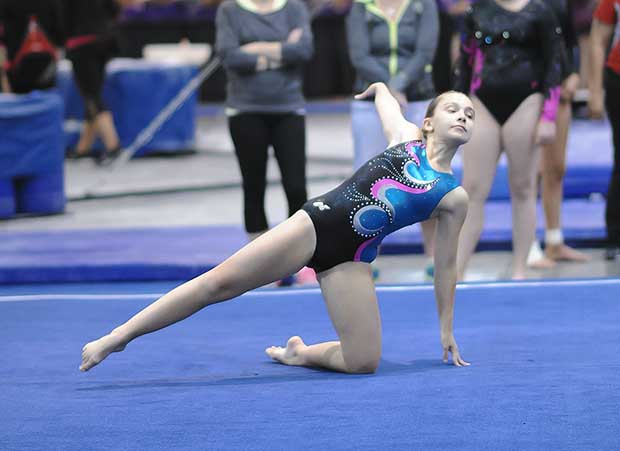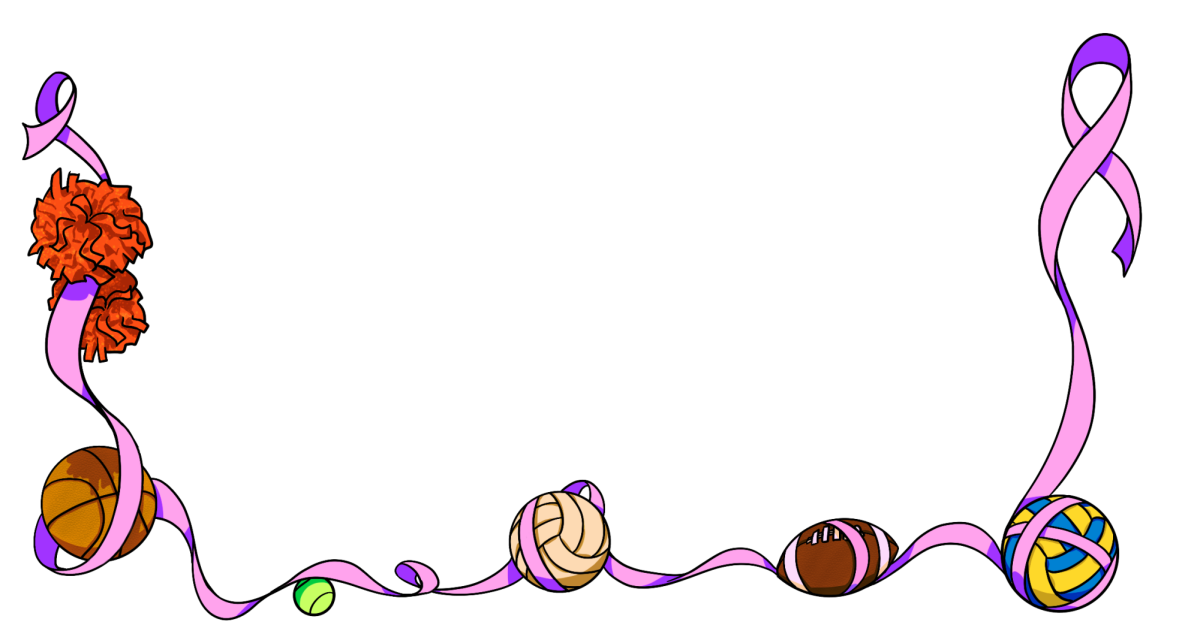Written by Evalyn Li
As they tumble through the air, gymnasts trust their bodies to follow muscle memory, allowing them to immerse themselves in their artistry. Harnessing their strength, gymnasts incorporate various artistic elements into specific events such as the balance beam and floor.
Gymnastics blends strength, swiftness, flexibility and elements of dance. The beam is one such example in which artistic ability is built upon the foundation of strength required to stay on the beam. “A lot of it is dance, fluidity of motions and the kind of emotions it causes,” sophomore Avital Rutenburg said.
For senior Lina Osofsky, who did high school gymnastics up until her junior year, the floor event, a series of moves combining dancing, acrobatics and tumbling, was an opportunity to show off her sassiness and uniqueness. On a private team, she did not have music choice, relying on her facial expressions to bring out her personality. “Once I got into high school gymnastics, I got to pick my own songs and choreograph it myself with my coach, which made it more personal to me and more fun,” she said.
Compared to many other sports that champion qualitative factors such as speed of pitches, height of jump or time of swim, gymnastics is judged more holistically. Gymnast sophomore Roark Sweidy Stata says details such as hand positions and facial expression are not only stylistic, but also accounted for in the judging. “My teammates always remind me to smile before my floor routine because I sometimes forget to do that,” Sweidy Stata said. “When you don’t look like you’re having fun, the judges won’t have fun either.”
In the same way gymnasts practice their strength and skill, they are mindful of the artistic details they add to their performance. “When you practice your routine, not only do you have to be strong, but also when you finish your skill, your confidence and presentation of the skill is equally as important as how you executed that skill,” Osofsky said.
While such artistic detail is strongly rooted in women’s gymnastics, it is not reflected the same way in men’s gymnastics. “You can see immediately on floor that guys’ routines don’t have music and is a combination of tumbling, flexibility and strength demonstrations,” Sweidy Stata said. For Ososfky, the differences seemed unfair at first, especially when she spoke with her male coach. “When I actually saw what they were doing I realized that music wouldn’t really go with what they were doing,” Osofsky said.
On the other hand, Rutenburg feels that male and female gymnastics are fundamentally the same. “We have dance literally in our routines whereas they don’t have movement dances, but I think to the exterior person just watching both, they both have that same rhythm,” she said.
The aesthetic element of gymnastics is also a source for audience appeal. “When you watch the Olympics, a lot of times why people prefer watching gymnastics is that the gymnasts kind of take you on a very long dance of various emotions and spikes of energies,” Rutenburg said. “The whole thing is like one big dance.”
Sweidy Stata says that this performance aspect is what differentiates one athlete from another. “The floor routines that really stand out are the ones that have a lot of high energy and make the crowd really into it,” Sweidy Stata said. “[The audience] can really tell from the way they exaggerate their moves.”













